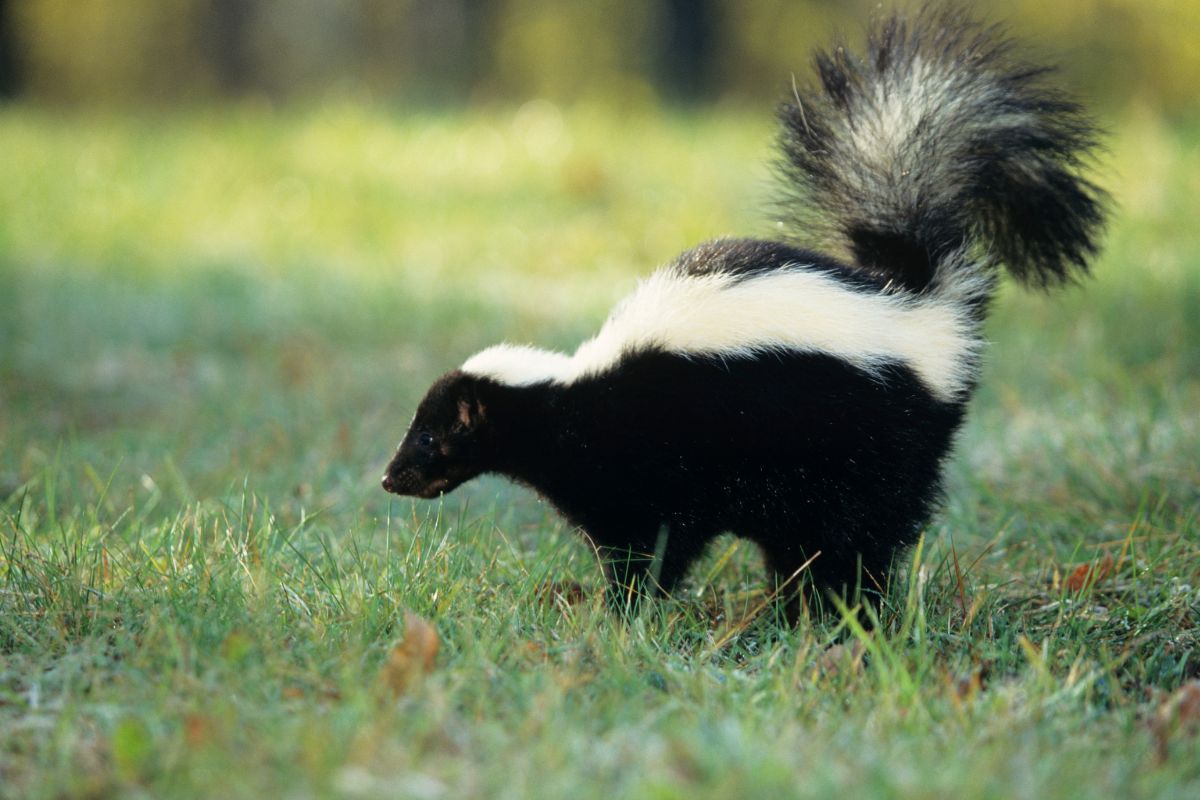Comprehensive Guide – Effective Methods to Get Rid of Skunks


Skunks, with their bold black and white coloring, are unmistakable creatures often associated with their potent spray. While their appearance may be distinctive, their presence can pose a myriad of nuisance concerns, from their strong odor to potential rabies transmission. This comprehensive guide delves into the most effective methods for skunk removal and prevention, ensuring your property remains free from these troublesome visitors.
Table of Contents
Skunks, typically growing to about 22-30 inches in length and weighing between 8-12 pounds, are primarily nocturnal omnivores. Their diet encompasses a wide range of items, including small rodents, insects, grubs, fruit, garbage, and pet food left outdoors. However, their most notorious feature is their ability to spray a powerful scent from glands located below their tails, serving as a defensive mechanism against potential threats.
Skunks are well-known for their strong odor, which can permeate the area and linger for considerable distances. Additionally, their presence under human structures such as sheds, decks, or crawl spaces can lead to unpleasant encounters and potential property damage. Moreover, skunks are common carriers of rabies, posing a significant health risk to humans and pets alike.
The most crucial step in skunk control involves trapping and removing the animals from your property. Utilizing a larger trap, preferably raccoon size, is recommended. Once trapped, skunks should be relocated to a distant location, at least ten miles away, to prevent their return.
To deter skunks from reentering your property, installing exclusion barriers is essential. These barriers, such as steel screens or decorative lattice, prevent skunks from accessing areas under sheds, porches, or decks where they commonly seek shelter.
Professional assistance may be necessary when skunks have fallen into basement window wells or taken residence in attics or walls. Hiring a professional trapper or employing tactics such as using wood planks for escape or cutting holes for removal can resolve these situations effectively.
You Can Check It Out to Get a Skunk Out of Your Garage.
While addressing skunk infestations, prioritizing humane removal methods is crucial. Live trapping allows for the safe relocation of skunks, minimizing harm to both the animals and the environment. Additionally, implementing deterrents such as bright lights or pepper sprays can encourage skunks to vacate premises without causing harm.
Protecting your garden from skunk damage requires proactive measures such as enclosing the area with chicken wire or deterring skunks with mothballs. Avoiding the use of poisonous pellets ensures the safety of both the environment and other wildlife.
Maintaining a skunk-free yard involves identifying and sealing potential den sites, employing live traps baited with enticing food, and relocating captured skunks to remote areas. Regularly monitoring and securing your property helps prevent future infestations.
Preventing skunks from accessing garages and sheds involves sealing entry points and utilizing deterrents like pepper spray or mothballs. Implementing effective exclusion methods and promptly addressing any signs of skunk activity can safeguard these spaces from intrusion.
Q: Can I use traps to catch the skunk?
A: While trapping may seem like a straightforward solution, it’s important to note that trapping and relocating skunks may be illegal or regulated in your area. Additionally, trapping can be stressful for the skunk and may result in injury or harm.
Q: What should I do if the skunk doesn’t leave?
A: If the skunk refuses to leave despite your best efforts, it may be time to seek professional assistance. Contact a local wildlife rehabilitation center or animal control agency for guidance on how to safely and humanely resolve the situation.
Q: How can I prevent skunks from returning to my garage in the future?
A: To deter skunks from re-entering your garage, continue to eliminate potential food sources and secure entry points. Consider installing motion-activated lights or sprinkler systems to deter nocturnal visitors.
Q: How do I know if there’s a skunk in my garage?
A: Look out for strong odors, droppings, or visible tracks as signs of skunk presence.
Q: What should I do if I encounter a skunk in my garage?
A: Remain calm, avoid sudden movements, and give the skunk space to retreat.
Q: Are there any natural repellents that can help lure a skunk out of my garage?
A: Yes, substances like ammonia or vinegar can act as natural repellents to encourage the skunk to leave.
Q: What time of day is best for luring a skunk out of my garage?
A: Skunks are typically more active during the early evening or late at night, making these ideal times for eviction.
Q: How can I prevent skunks from returning to my garage in the future?
A: Thoroughly inspect your garage for entry points and seal them off with sturdy materials to prevent future intrusions.
In conclusion, effective skunk control requires a comprehensive approach encompassing trapping, prevention, and humane removal techniques. By understanding skunk behavior and implementing proactive measures, homeowners can mitigate nuisance concerns and safeguard their property against these persistent intruders. Remember, prioritizing humane methods ensures the well-being of both skunks and the surrounding ecosystem.
By adhering to these guidelines and taking proactive steps, you can effectively manage and eliminate skunk infestations, ensuring a safe and harmonious environment for both humans and wildlife. For professional assistance with skunk removal, consider consulting our comprehensive list of wildlife removal professionals in your area.
Sign up to receive our email, delivering the latest stories straight to your inbox.
